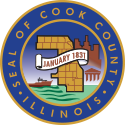RainReady Green Infrastructure Plan Implementation for Calumet Area
Cook County allocated $6 million to reduce negative impacts caused from flooding by implementing RainReady, a program that helps people and communities manage flooding in a time of climate change. RainReady plans will be implemented in six flood-prone communities known as the Calumet Corridor. These communities located along the Little Calumet River include Blue Island, Calumet City, Calumet Park, Dolton, Riverdale and Robbins. The County has partnered with Center for Neighborhood Technology, Greenprint Partners and community leaders to ensure these six communities become more resilient to flooding by improving stormwater management through green infrastructure and sustainable economic development.
View the RainReady Calumet Corridor plan here.
RainReady Background
An initiative spearheaded by CNT RainReady policies and practices help property owners and communities reduce their risk of flooding, become more climate resilient and create healthy buildings and green neighborhoods. RainReady approaches are tailored to the specific needs of each building and community.
In 2016, CNT worked with the six communities to develop RainReady Calumet Corridor, a plan to reduce flooding throughout these areas by coordinating investments in private homes, public spaces and regional infrastructure. Initial funding for this project was provided through funding from Cook County’s Community Development Block Grant program . The additional funding provided by the County ensures significant progress is made on the installation, maintenance and repairs of projects within each community.
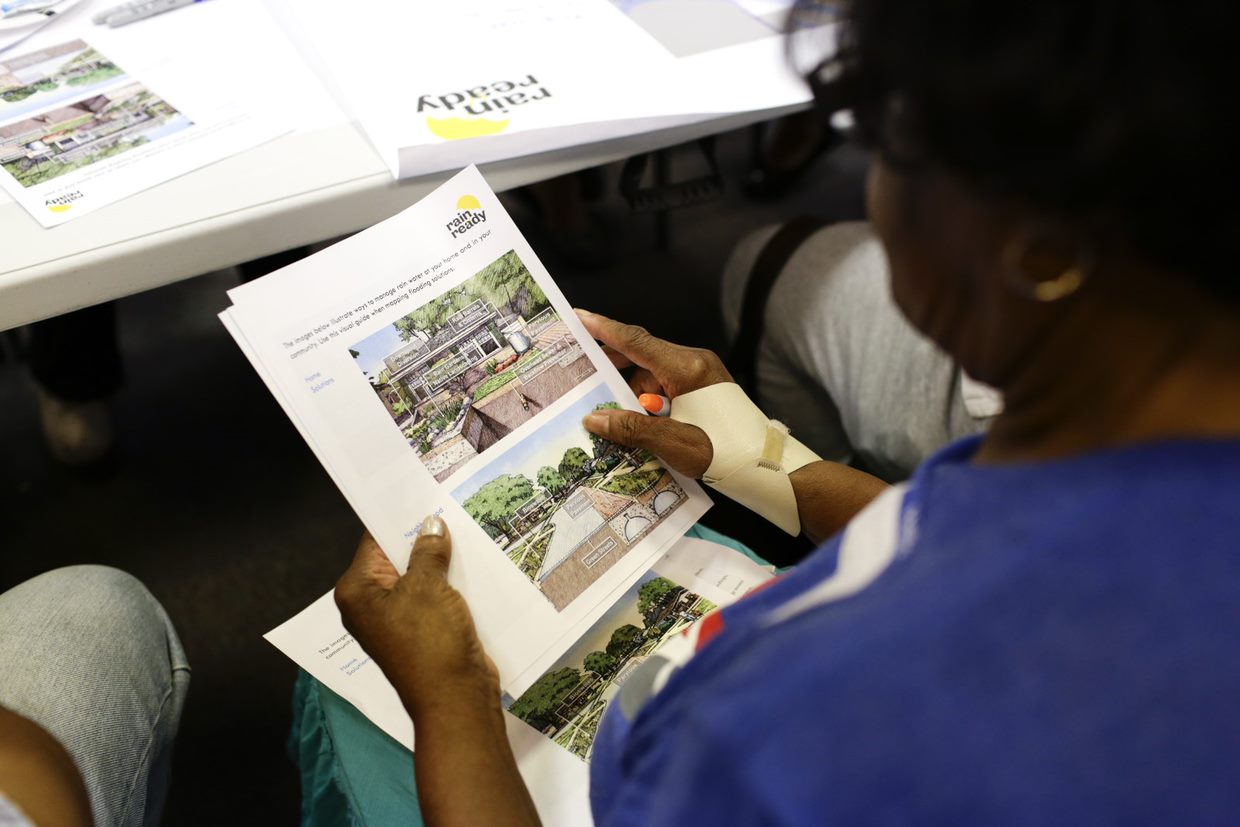
Dolton residents look at proposed solutions to flooding during town hall meeting. Source: CNT
About Green Infrastructure
Green infrastructure is an umbrella term for a wide variety of tools and practices that allow communities, project planners and municipal leaders to bolster existing environments with nature-based solutions in preparation for continued climate-related events. It is an approach that looks at water management holistically, creates a network of green space connectivity and reinforces or replicates ecosystem services. Because many types of green infrastructure include restoration of natural areas and the addition of native plants, these efforts not only reduce the negative impacts of increased precipitation events, but they can also create important livable habitat for local plant and animal species, cleaner air, cooler temperatures and easier access to green spaces for community members.
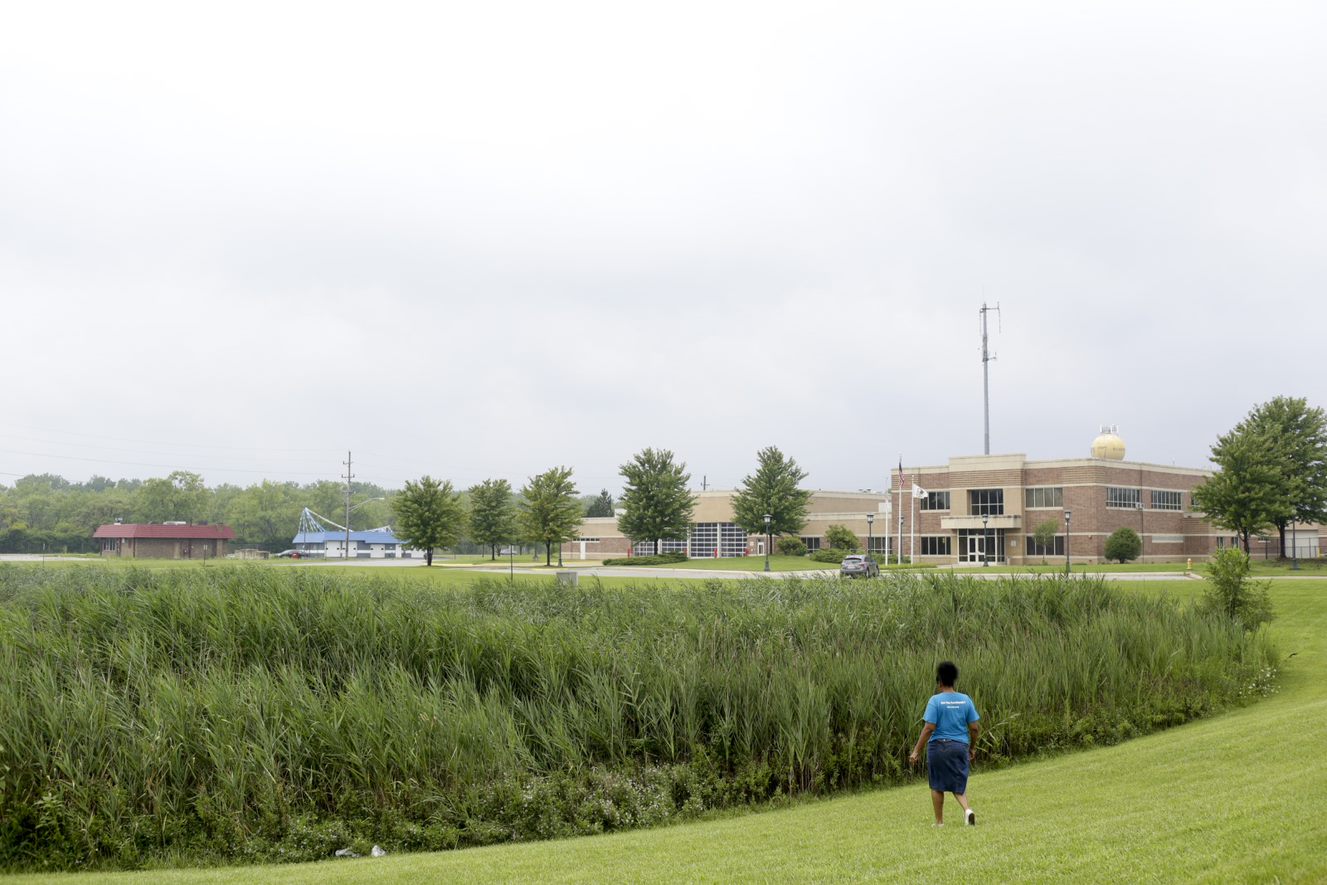
Detention pond in Riverdale. Source: CNT
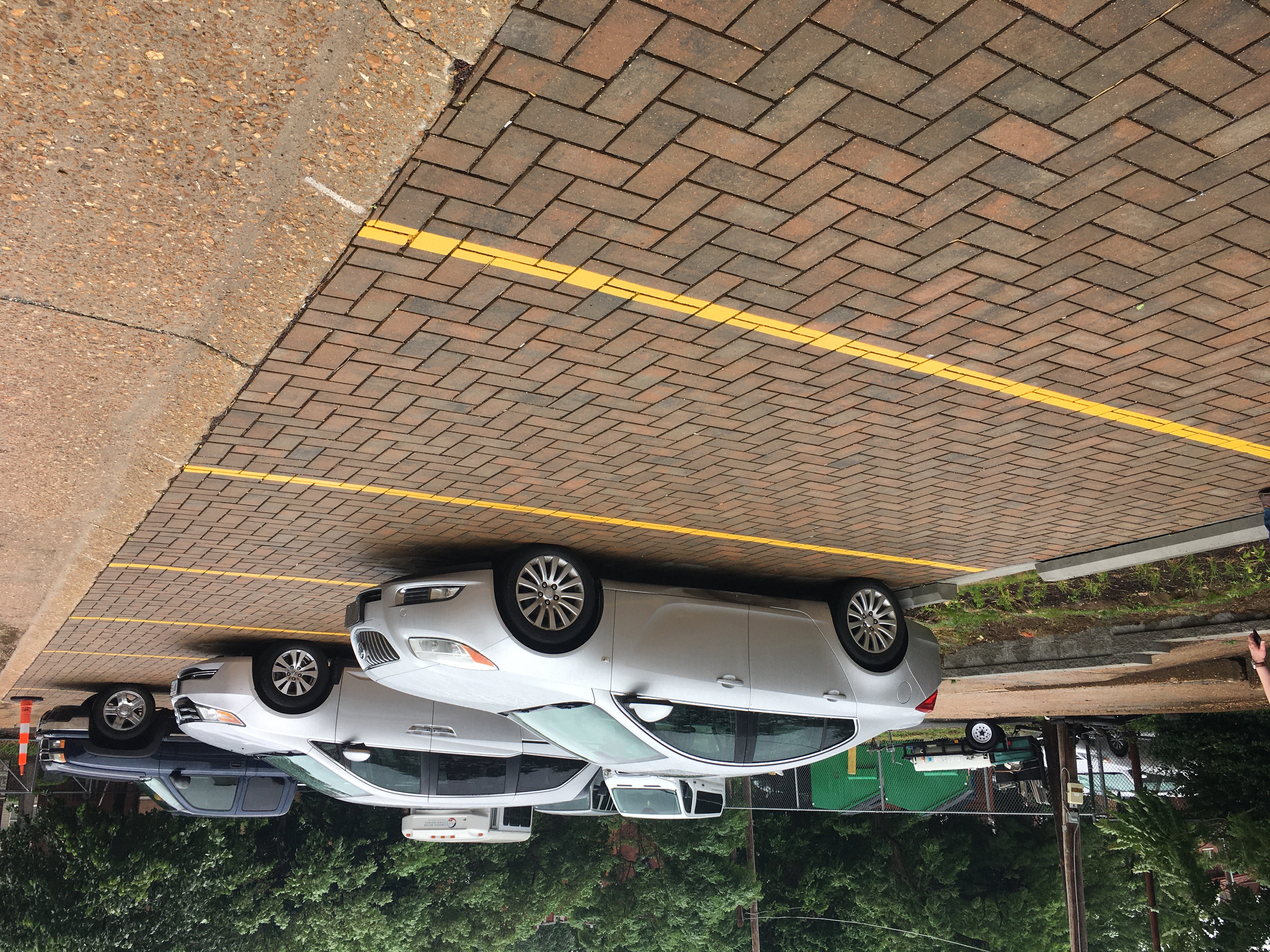
Permeable Pavement at Cathedral Towers in St. Louis, MO. Source: Greenprint Partners
Strategically investing funds into these communities and utilizing nature-based solutions will result in direct benefits to residents, municipal and County systems. Benefits may include fewer medical visits related to heat, flooding and air pollution and cost savings from reduced disaster maintenance and infrastructure repairs over several decades.
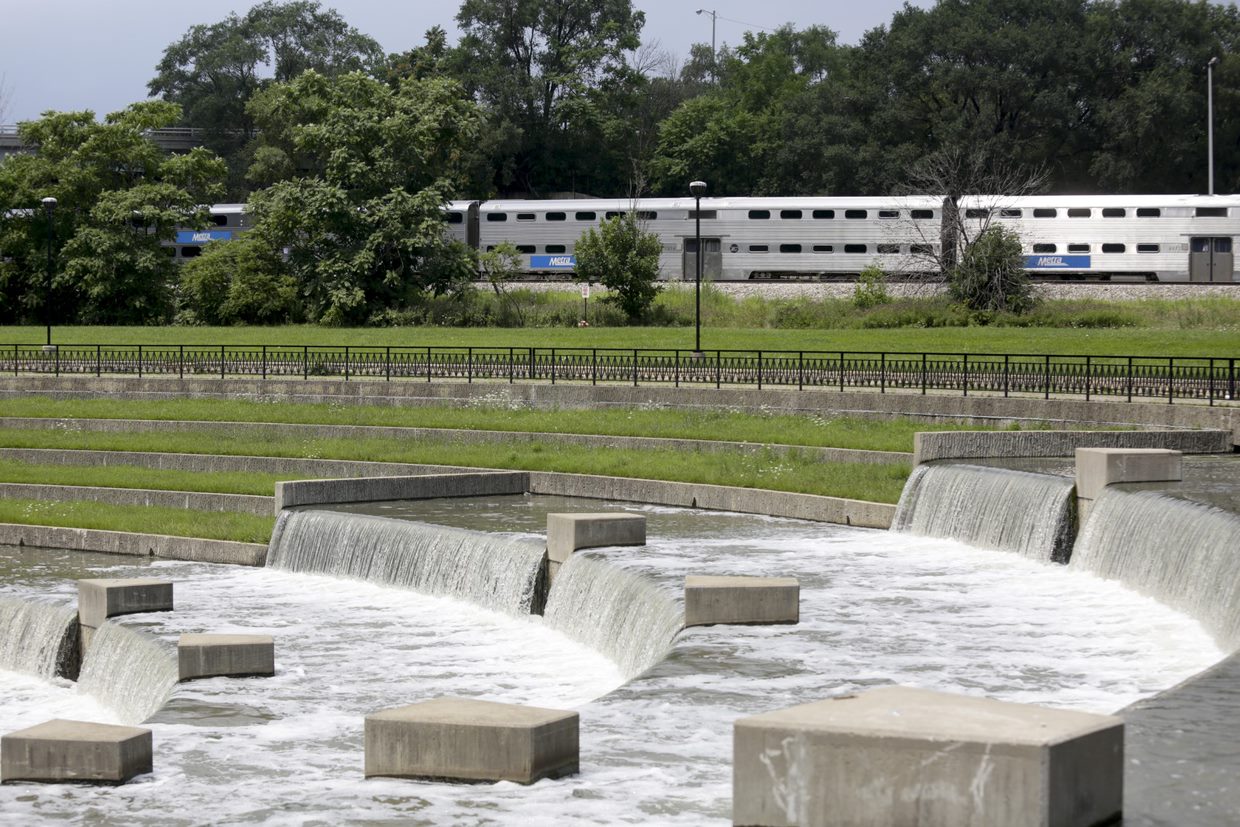
The Metra is seen passing the sidestream elevated pool aeration station in Blue Island. Source: CNT
Anticipated Timeline
Winter 2022 - Spring 2023: Community engagement and outreach with RainReady Steering Committees and leadership from each of the six communities.
Summer 2023: Requests for proposals for contractors and project prioritization.
Summer 2023 - Fall 2024: Engineering and design.
Fall 2023 - Spring 2025: Project installation.
Fall 2026: Wrap-up program*, finalize report and establish maintenance plan.
*ARPA funds must be obligated by end of 2024 and spent by 2026.
Resources
Cook County’s American Rescue Plan (ARP) At a Glance Cook County ARP & Racial Equity
Municipal Water Reclamation District Green Infrastructure
